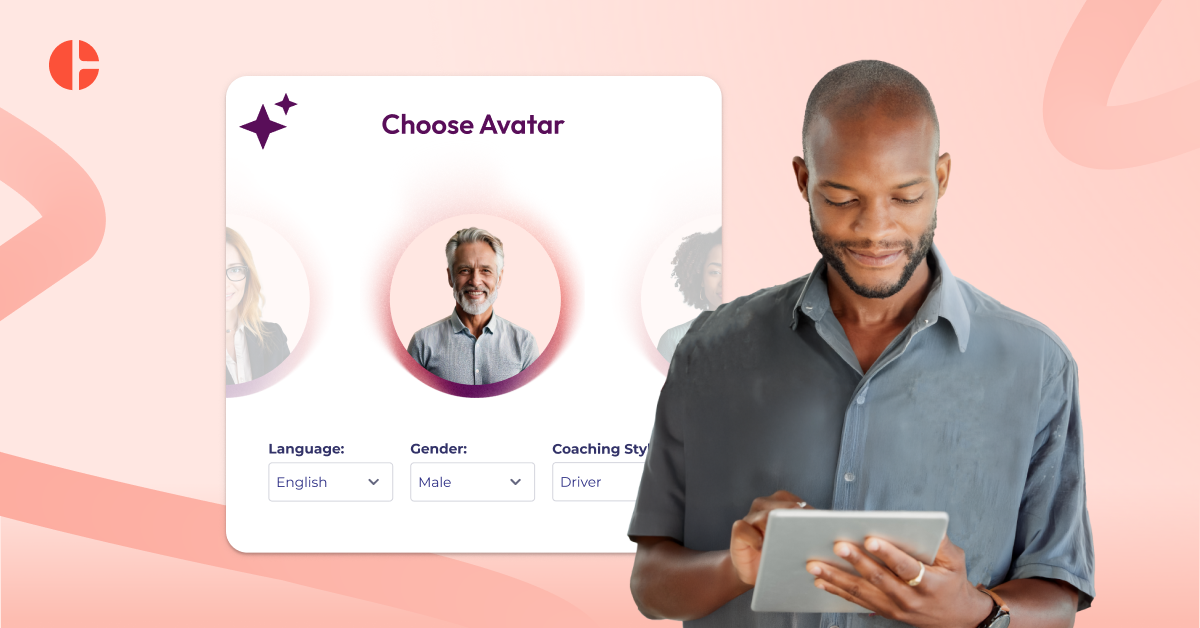3 Ways Employers Can Debias Recruitment and Onboarding

The gender gap in the workplace is well-known to individuals and organisations alike. However, awareness of this issue is the first step to overcoming it. To address the gender gap, organisations must strive for gender equity in the workplace. Transformation in this area is possible by uncovering where issues lie at every level of the hiring process. Historically, recruitment and onboarding are where discrimination filters out women as candidates. To achieve diversity in the workplace, this must change. Here are three actionable strategies organisations can use to debias recruitment and onboarding.
Strategy 1: Develop inclusive hiring policies
The presence of gender bias in recruitment leads to a lack of diversity on your team. Research evidence suggests that gender diversity in teams leads to higher performance. Biases not only dilute your talent pool, but they can also lead to legal issues. For example, Google settled allegations of discrimination against women with the U.S. Department of Labor for $3.84 million after showing the company acted out of bias towards women and Asian applicants.Implementing diversity and inclusion policies from a potential employee's first interaction with your organisation is vital. It's essential to understand how everything from the language of job descriptions to interviewing questions and unconscious biases of the hiring team can affect the diversity of your hires.
Write gender-free language job descriptions
Certain words communicate biases, both conscious and unconscious. Therefore, examining the language surrounding recruitment and identifying the potentially harmful and alienating words commonly used in this process can assist in creating gender-neutral job descriptions.
- Remove specific pronouns: Use terms like “candidate” and “employee” in job postings. Do the same in interviews and onboarding, using “you” instead of the traditional “he” or “she.” Remove gender-specific words like “workmanship” and use terms like “spouse” or “partner” instead of “wife” or “husband.”
- Implement gender-neutral titles: Some jobs and titles have historically had male-centric descriptions. For example, avoid words that carry an unconscious bias like “rockstar ” or “ninja” and instead opt for titles like “leader” or “developer.”
- Analyse job descriptions for coded language: Some adjectives are traditionally associated with specific genders. For example, words like “objective,” “bold,” and “decisive” are often positively attributed to men, while terms less used in a corporate setting, like “emotional,” “bubbly” and “nurturing,” are used to describe women.
Research words that communicate biases and then examine the language used in recruitment. Studies have revealed that gender-biassed language in job descriptions causes jobs to be less appealing to women. Therefore, changing the language in the hiring process will aid your organisation in reaching diverse candidates.
Implement inclusive hiring policies.
It is essential to state your organisation's commitment to equity and diversity, informing potential hires you are committed to a fair and equitable recruitment process. Convey an inclusive corporate culture through the policies you use to obtain new hires.
- Use blind CV screening to eliminate selection biases: Blind screening can counteract recruiters' potential conscious and unconscious biases. This practice can help remove discrimination not only toward gender but race and age.
- Apply a diverse panel of recruiters: Diversity in recruiters will help counteract the impact of similarity bias. Similarity bias tends to emphasise the similarities between the candidate and recruiter. Instead of highlighting skills and achievements, recruiters tend to favour things like background, gender, and personality traits. This bias is harmful to achieving diversity and often excludes capable candidates.
- Implement inclusive company policies: Create policies allowing equal access to resources, ensuring every employee can access the tools to help them succeed at your organisation. Consider having gender-inclusive work-life policies that address parenting, flexible work schedules, and mental well-being.
Becoming an inclusive employer is an essential step in attracting diverse candidates. However, understanding inclusive hiring processes isn’t about painting everyone with the same brush. Instead, fostering an inclusive culture starts with seeing the whole person, including identity, race, and gender, and having your policies reflect this perspective.
Coach talent acquisition to foster equal employment opportunity
Implementing coaching can create a low-pressure environment in recruitment. Instead of being critical of recruiters, coaching can help identify unconscious biases and how to overcome them regarding hiring practices.
- Coach one-on-one: A personal approach to coaching helps avoid blanket statements and HR policies that employees could overlook, forget or even ignore. Instead, help individuals examine their biases and how they may impact the hiring process. Ensure employees feel supported in creating a culture of equity and diversity.
- Coach talent acquisition leaders: Develop a clear and concise hiring rubric and coach everyone involved in the hiring process through it. Set your organisation up for success by ensuring evaluation standards are clear for both the candidate and recruiter.
- Coach to unlock self-awareness: Implementing coaching for talent acquisitions can help identify and address gender biases, among many others. In addition, coaching creates a safe space for growth, so individuals won’t feel singled out or judged.
Coaching is taking a deliberate approach to maintaining an inclusive hiring approach. It sets your organisation up for success by adequately onboarding talent acquisition leaders, managers and recruiters. It is a way to get everyone on the same page and guide them through eliminating biases and creating a culture of inclusivity.
Strategy 2: Increase retention through onboarding policies
Inclusive hiring practices can only be helpful when supported by proper onboarding procedures. Onboarding is critical in hiring and retaining diverse employees — especially women. A common trend in some industries, such as tech, is that women leave positions at a rate 45% higher than their male counterparts. According to a Brandon Hall study, a proper onboarding policy can address this issue. This research reveals that gender-neutral processes, which maintain inclusive and fair onboarding, can improve the retention of new hires by 82%. A few critical elements are involved in creating policies for onboarding diverse candidates.
Understand the barriers faced by women
When starting a position at any organisation, there are universal ways that individuals struggle to thrive and adapt to a new environment. However, women have historically faced more issues than men when starting a new job or entering a new position at an organisation.
- Pressure to fit in: Social pressure is often amplified in male-dominated fields that perpetuate gender-specific sub-cultures and stereotypes. In addition, the issue of similarity bias comes into play when men accept those who are more like themselves quicker than “outsiders.”
- Imposter syndrome: Harvard Business Review defines it as a collection of feelings of inadequacy that persist despite evident success. Meaning that women can feel they don’t deserve to be in a specific position despite being qualified.
- Work-life balance: This balance has traditionally been more stressful for women than men, who often shoulder more responsibilities at home than their male partners. Research indicates that women are often more responsible for childcare and maintaining a home than men. These responsibilities are often in addition to duties from work outside the home.
Only when we understand the barriers experienced by women can we start to create inclusive onboarding practices. To understand this better, create a safe space for female recruiters and employees to voice their experiences. First, take steps to understand women's unique workplace issues. Then, learn from their experience, and implement the knowledge you gain into hiring practices.
Create a space for women to onboard successfully
New hires need to feel like they have a safe space. Coaching is a valuable tool for onboarding any individual. In addition, it can be an invaluable support system to adjust to a new environment and tackle the learning curve of a new position. There are several ways women can benefit through support via coaching.
- Foster a safe space: Coaching can allow women to express their needs, doubts and fears in a safe space. Coaching can act as a sounding board on how the current culture will enable women employees to thrive. In addition, coaching can help gauge if they have the freedom to express their full potential in the new role.
- Provide an outlet to express vulnerability: Coaching can offer a space to acknowledge mistakes and areas for growth. It allows employees to express opinions and share constructive feedback without fear of consequences.
- Brainstorm strategies and solutions: Coaching can help find solutions to build workplace alliances and a professional support system. You can foster an awareness of the talents that will help them succeed in the new role. Coaching can assist individuals in navigating an organisation's unique ecosystem.
Organisations need to create an onboarding process centred around the candidate and focused on creating a culture of trust and psychological safety. If you are striving for a gender-neutral onboarding process, it is crucial to have specific support systems, like coaching, to overcome the historical bias against women.
Strategy 3: Actively support women during the recruitment process
Creating an onboarding process that supports the individual and ensures clear expectations is the first step organisations should take when supporting women during recruitment. Creating a culture of inclusivity for traditionally marginalised individuals to thrive is essential to building a healthy corporate culture. Policies around safe spaces and work flexibility are two things to keep in mind during the recruitment process.
Create safe spaces
HR (Human Resources) carries much of the responsibility for driving change. Organisations can communicate the desire to shift towards an inclusive culture by putting specific systems in place. Having the right policies in place can set your organisation up for success. For example, an organisation should implement strategies to foster a culture of safe spaces.
- Create a buddy system: Implementing a buddy system allows any new hire to ask questions and express doubts in a safe space. In male-dominated workplaces, women can feel isolated. Providing a safe space to ask questions can be essential for adapting to a new role.
- Provide internal mentors: Employees can benefit from mentors that support new hires along the way. Whether through coaching or internal mentoring programmes, providing a mentor for women is crucial. In male-dominated organisations, men often have an advantage because, at every level, there is a man to provide leadership or mentoring.
- Create an ERG (employee resource group) for women: Ensure representatives are activated at different levels of seniority in the company and can take an active role in onboarding a new employee. Women can benefit from fostering their internal network from the beginning and feel that others before them have reached different levels of growth in the organisation.
Research surrounding the need for safe spaces reveals that women experience more harassment than men in public, private, and virtual spaces. This data, while being brought to light in the last few years, has been known to women all along. Unsafe spaces create fear. This fear results in women leaving their job, not being able to advance in their careers and not performing to the best of their abilities. Therefore, creating safe spaces to support women through the employee life cycle is vital.
Provide Flexibility
Work teams with balanced gender representation perform better than male-dominated ones. (Lauring & Villesèche 2019) If your organisation's goal is gender diversity, then it is essential to create an environment that fosters the success of both men and women. Traditionally women have been left out of this process. However, there are a few things an organisation can do to attract more women and create an environment for them to thrive.
- Offer hybrid work schedules: Attracting more women to your organisation may require offering greater work flexibility. Organisations that understand the amount of household responsibilities women disproportionately still hold more than men should recognise it by offering hybrid work schedules, including a flexible hours system or options to work from home.
- Examine at-work accommodations: Historically, women have experienced less access to bathrooms. Studies have indicated that this is still an issue today, whether that is a lack of female-designated bathrooms or conveniently located ones compared to men. A similar issue arises regarding female employees who are nursing mothers and often have nowhere to nurse or pump when needed.
- Create inclusive company policies: When creating company policies, it is essential to consider women's needs and struggles in the workplace. For example, consider that women traditionally face more harassment, that women receive promotions less often, and that women historically have been paid less for the same work. Keeping this in mind, create company policies to support women in these areas. Additionally, revisit your organisation’s parental leave policies and reboarding process.
An increase in work flexibility and inclusive policies are simple steps you can take to improve the attraction and retention of gender-diverse hires. Policy changes and practical adjustments are necessary to create gender-neutral spaces and foster the hiring and success of women in areas that have traditionally only focused on men.
Set yourself up for success
Research continues to highlight the benefits of gender-balanced organisations. Integrating policies that promote equality in the workplace will help aid in debiasing your organisation. Start by assessing hiring practices and follow by creating spaces and onboarding procedures that support gender equity in all recruitment phases. Next, implement systems that aid employees in navigating this culture shift. Finally, be sure to help new hires and current employees through coaching. These strategies will set your organisation up for success in diversifying and increasing women's support and empowerment in the corporate setting.
FAQ
Yes, executive coaching plays a key role in retaining and engaging senior leaders by giving them space to reflect, grow, and lead with purpose. Through individualised support, executives strengthen communication, decision-making and resilience — all of which drive engagement and long-term satisfaction.
With CoachHub Executive™, organisations not only see improved leadership performance but also greater alignment, motivation and confidence among their top talent, resulting in higher retention and a stronger leadership pipeline.
CoachHub Executive™ goes beyond one-to-one sessions by integrating technology, measurable insights and continuous learning into every coaching journey. Each executive benefits from personalised matching with certified coaches and flexible session formats to reinforce development between sessions.
While traditional coaching often lacks scalability or measurable tracking, CoachHub ensures impact visibility through data-driven dashboards, 24/7 scheduling flexibility and a consistent, high-quality experience for leaders worldwide, that can be tailored to your organisation's goals.
Yes, executive coaching is delivered across 90 countries in 40+ languages, with localised coach networks that meet the cultural and business needs of global organisations.




.svg)


.svg)





.png)



